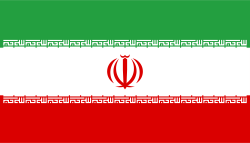Iran Stockpiles Uranium Near Weapons-Grade Levels, Raising Global Concerns
 Iran
IranA new analysis highlights the striking similarities between Iran’s nuclear ambitions under Shah Mohammad Reza Pahlavi and the Islamic Republic's current leadership, suggesting that these pursuits may be more dangerous today. Since the nuclear program's disclosure in 2002, Western nations have utilized negotiations and sanctions to limit Iran's activities, yet the government has refrained from curtailing its nuclear plans despite economic hardships, as noted by the International Atomic Energy Agency.
Historically, Iran's nuclear ambitions date back to the 1970s, when the Shah envisioned a nuclear program as a means to counter threats from regional powers such as Israel and Pakistan. American officials, including former Secretary of State Henry Kissinger, expressed concern over Iran's nuclear capabilities, believing it aimed to develop nuclear weapons despite official denials.
In contrast, current leaders, including Supreme Leader Ayatollah Ali Khamenei, have also claimed their nuclear endeavors are peaceful, yet their rhetoric often suggests otherwise, as they confront Western nations with direct threats. This evolution in Iran's nuclear policy, marked by a blend of nationalism, ideology, and self-preservation, raises significant apprehension regarding its future intentions.
 Iran
Iran Iran
Iran Iran
Iran